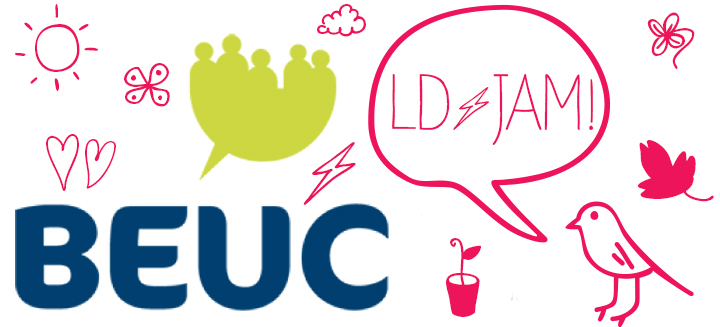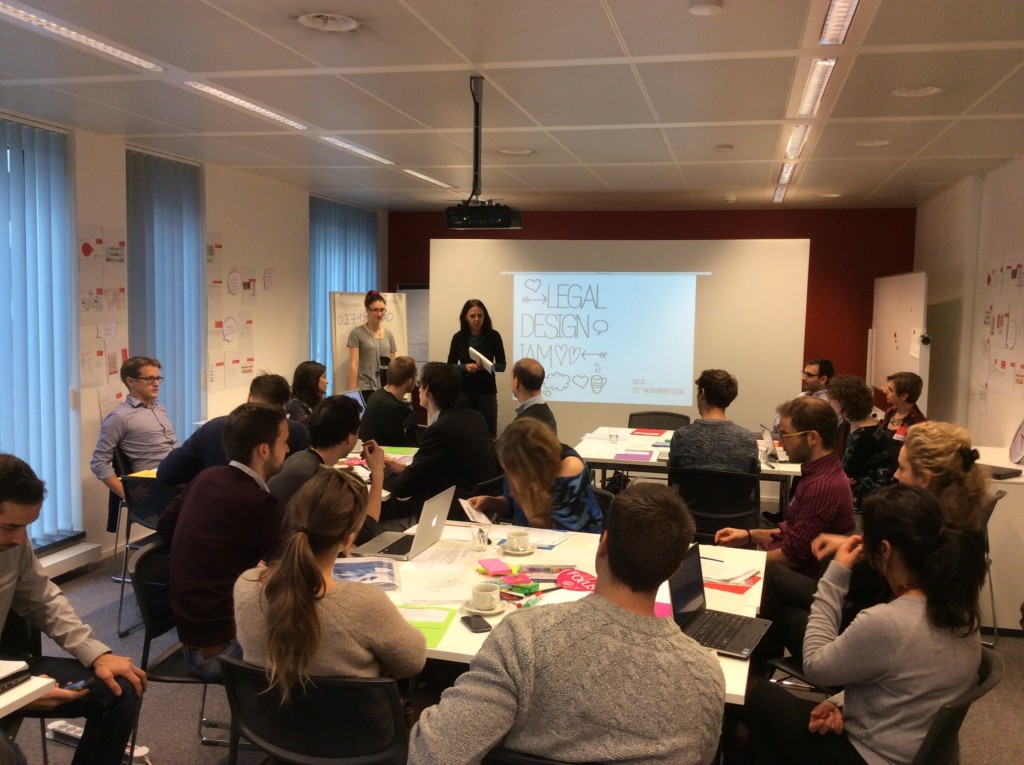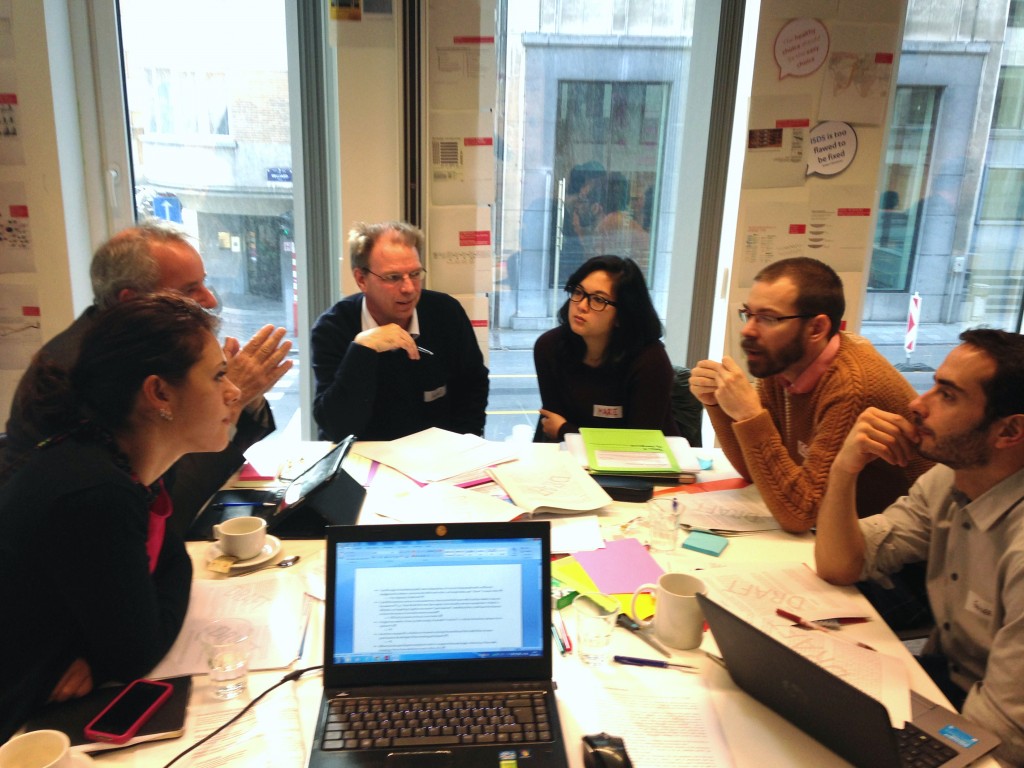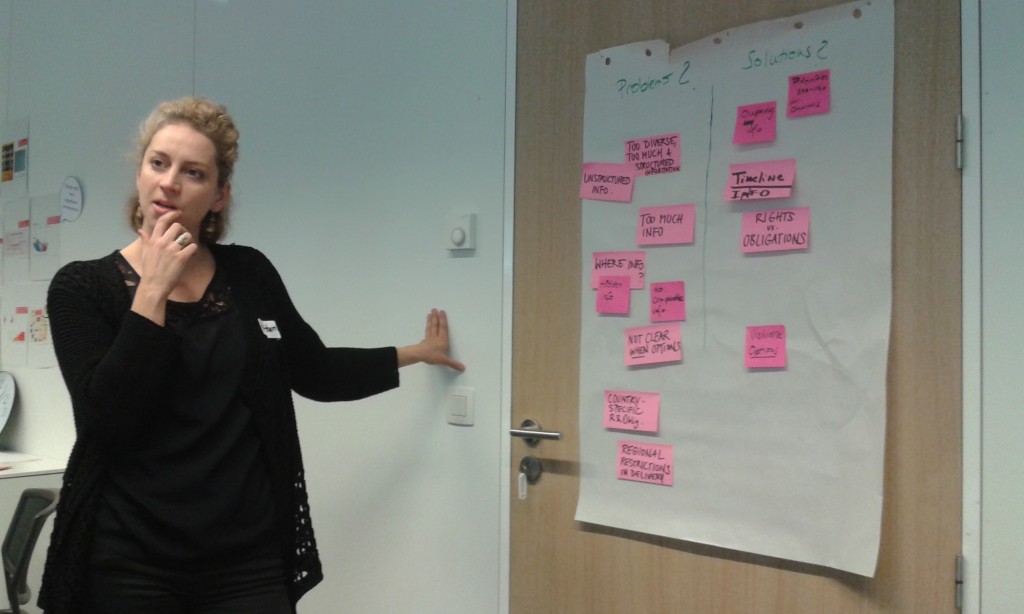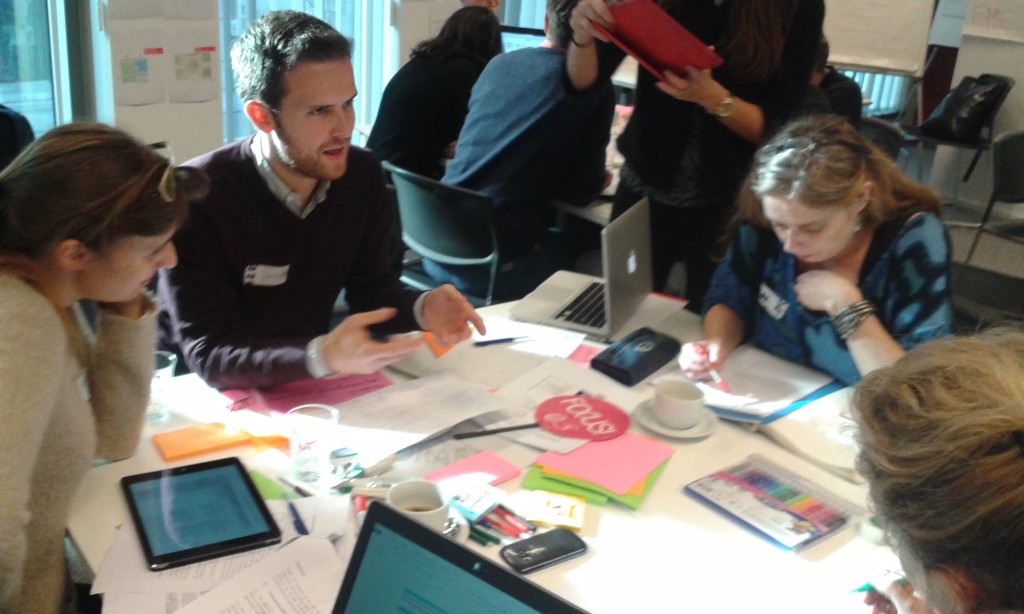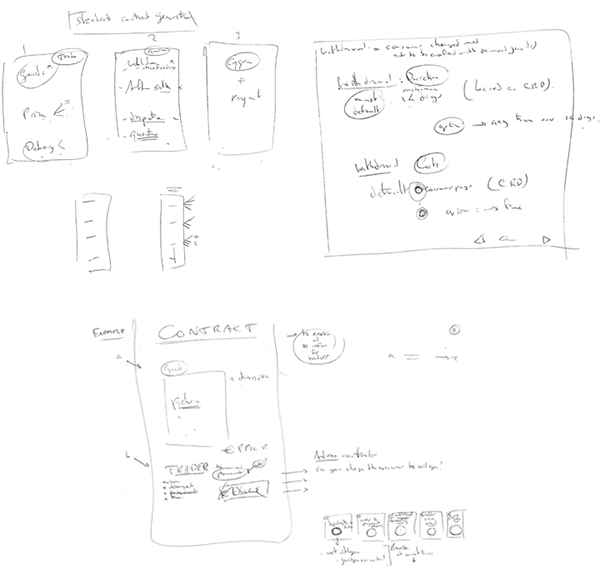The last – but not least! – of the three Belgian Jams organized during my visit at KU Leuven’s ICRI (Interdisciplinary Centre for Law and ICT), saw the collaboration of BEUC (The European Consumer Organization) in hosting the session and providing a challenging topic. BEUC has been working towards the creation of a standard European Contract Model for B2C e-commerce, and this Jam’s goal was to contribute ideas to finalize it in a consumer-friendly way. The Jam was organized within the framework of the EMSOC Project, and as part of ICRI’s Visual Law Lab pilot.
Participants
The Jam brought together almost 30 people – design students and professionals, researchers, policy-makers from the European Commission, experts from the business world and from consumer rights advocacy: Jef Ausloos, Guillermo Beltrà, Agustin Reyna, Ursula Pachl, Kostas Rossoglou, Hilde Princen, Karel van der Waarde, Csaba Gàli, Sven Röhr, William Matgen, Fatma Sahin, Marie Alpuerto, Margot De Baets, Wout Neirinck, Jan Duerinck, Ian Six, Thomas Roelens, Léon Mölenberg, Antoine Quentin, Karen Mentens, Marlies Desomer, Maria Carolina Campos, and Katharina Knoll.
Scope of the Jam
We worked on the European Model Contract that BEUC has been developing. The EMC is not ready to use as such, but provides a blueprint and some guidance to create a good contract for e-commerce sites that sell goods. However, a big issue is that the EMC at the moment is partly ready clauses, and partly instructions for a business that would like to use it as an outline to write their own contracts: so it is in-between two genres! We also have, potentially, two different user groups: are we trying to communicate “how-to” to traders, or are we trying to create ready clauses understandable for the consumers
In light of these issues, we focused our efforts to improve the EMC around 3 different challenges:
- Designing the EMC as a guidancefor traders to write more user-friendly contracts
Organize the content of the document in a way that it is clear what are ready-made clauses, what text needs to be filled in and what are the options, what content is just advice, etc. Design a clever layout to make the document easy to use. - Designing a model contract that truly communicatesto consumers
Could e-commerce sites generate a “personalized contract” related to your purchase (like a flight tickets issued by airlines), using a standard well-designed form and variable information? Could it be max. 1 page long, in clear language and something you get to read upon purchase? Could it be not hidden at the bottom of the page? - Creating a collection of diagrams that explain better the EMC concepts, to either consumers or traders
Taking a topic-by-topic approach, create a collection of explanatory diagrams for the points covered by the EMC. These diagrams can be used by either traders or consumers: in the first case, they could be located in EMC as guidance for traders; in the second case, they could be used in real contracts to explain better what a clause means.
Team 1
Team 1 worked on optimizing the EMC for traders. They took a very innovative approach, challenging the idea of “contract + instructions” as a document, and focusing instead on the traders’ needs of 1) applying mandatory rules 2) choosing easily between different options.
The team specifically took to heart the needs of smaller traders, more interested in running their business than to have perfect terms and conditions. Their solution is a contract generator, where mandatory provisions are “hard-wired” and optional provisions can easily be added or chosen from an extensive library of options and clauses. This simplifies the process of drafting a simple and compliant B2C contract. Additionally, an automated tool could ensure that the language and design of the generated contract would be as clear, transparent and consumer-friendly as possible, because the libraries of clauses and layouts could be created in advance with particular attention to these issues.
From paper prototypes…
… to a simple digital mock-up of the idea
Teams 2 and 3
Two teams worked instead on the second challenge, or how to make the B2C contract clearer to the consumer.
Team 2 worked on the idea of generating a personalized contract at the moment of check-out. The idea is to have a standard template where information about product, delivery, warranties etc. specific to your purchase would be simply uploaded, as in a dynamic website, or as airlines do when issuing digital flight tickets. This standard contract would prioritize information relevant for the consumer at the moment of purchase (price, delivery, warranties). The contract would be also sent via email along with the invoice. In case consumers are unhappy with the purchase, they can refer to the contract that will address them to the rightful procedure to return the goods and get a refund.
[Click on the picture to see full screen]
Team 3 instead focused on the effort of informing properly the consumer at checkout. They chunked down the information in small bits, that need to be reviewed by the consumer before being able to proceed to payment. The team admitted to have copy-pasted too much placeholder text in their prototype (but hey, there is not a lot of time at LDJ to polish every detail!), and that their idea was to have simple, short sentences and explanatory diagrams under each heading of the “know your rights” checkout procedure (ordering, returning, guarantees, customer support).
Team 4
Team 4 lastly tried to find a solution to the question “what if consumers still find the concepts in the clauses too hard when they try to read them? How can we explain these concepts not only verbally?”. The team has been working on explanatory diagrams to explain few key topics of a consumer contract, such as the ordering process, the withdrawal/refund process, and what to do in case goods are not conform to what was promised.
All prototypes are Licensed under the CreativeCommons CC BY-SA 4.0 License

